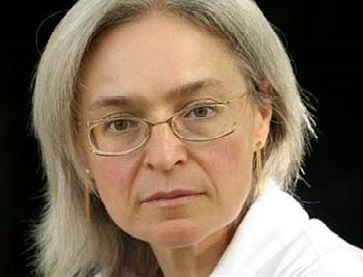
Ago 23, 2022 | The Blog
Darya Dugina, the daughter of extremist Russian firebrand Alexander Dugin, notoriously died when her car blew up in a Moscow suburb a few days ago. Talk about poetic justice.
Not only was she the daughter of one of the ideological instigators of the invasion of Ukraine (he was known as Putin’s Rasputin), but she was also a militant neo-Nazi in her own right.
I hasten to add, she’s not the woman in the picture. She wishes…
In a matter of hours, if the Russian propaganda machine is to be believed, the FSB* has solved the case and identified a “person of interest”, a Ukrainian citizen (now, that comes as a surprise!) who is said to have fled to Estonia after the attack. All this in the best Russian tradition of “zero evidence.”
In my head, I hear someone saying, “We don’t need no steenkin’ evidence” in a heavy Russian accent.
To crack such a case in just two days is akin to science fiction, especially if you consider the FSB’s less-than-stellar record.
- Boris Nemtsov (1959-2015) was a liberal politician who had served as deputy Prime Minister under Boris Yeltsin. A fierce critic of Vladimir Putin, Nemtsov was gunned down by a commando of Chechen assassins in the vicinity of the Kremlin. 2,733 days later, the investigation aimed at identifying the mastermind of this murder has produced no results.
- Natalya Estemirova was a Russian civil-rights activist who was abducted and murdered in Grozny, Chechnya, in 2009. Estemirova had denounced numerous civil rights violations by the Russian troops and their Kadyrovite proxies. Her body was found in a ditch near the town of Gazi-Yurt, some 80 kms to the west of Grozny. 4,786 days later, her murder has become a “cold case” that won’t be solved anytime soon—or ever.
- Anna Politkovskaya (photo) was an American-born journalist who spent seven years in Chechnya covering the second Chechen war in spite of constant harassment and intimidation by the Russian military.
 She wrote for the Novaya Gazeta as an investigative journalist who did not pull any punches in criticizing Putin. Politkovskaya was killed in 2006 by a hit-team of five men. The killers got a prison sentence but the person who orchestrated the hit was never found—at least in the 5,798 days that elapsed since Politkovskaya’s death.
She wrote for the Novaya Gazeta as an investigative journalist who did not pull any punches in criticizing Putin. Politkovskaya was killed in 2006 by a hit-team of five men. The killers got a prison sentence but the person who orchestrated the hit was never found—at least in the 5,798 days that elapsed since Politkovskaya’s death.
But today Vladimir Putin is satisfied that his FSB has found the culprit of Darya Dugin’s assassination in just 48 hours.
If any evidence to the contrary should surface, how sure are we that we’ll ever know?
*Since 1995 the FSB is Russia’s security service, the main heir of the infamous KGB of Soviet memory. In Moscow it occupies the same building, known as the Lubyanka.
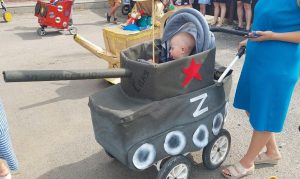
Ago 15, 2022 | The Blog
 We are all aware of the crimes against humanity committed by Russia during its unwarranted and illegal invasion of Ukraine. Most of us have been horrified at the harsh imagery of civilians gunned down on city streets, the contents of their shopping bags strewn all over the pavement. We have witnessed the grim discovery of mass graves in Bucha and elsewhere, we’ve read about the forced deportation of Ukrainian civilians to remote areas of Eastern Russia.
We are all aware of the crimes against humanity committed by Russia during its unwarranted and illegal invasion of Ukraine. Most of us have been horrified at the harsh imagery of civilians gunned down on city streets, the contents of their shopping bags strewn all over the pavement. We have witnessed the grim discovery of mass graves in Bucha and elsewhere, we’ve read about the forced deportation of Ukrainian civilians to remote areas of Eastern Russia.
It would be fair to say that the genocide being perpetrated by Russia is a ghastly reality—and that the much-overrated UN is actually powerless to stop it. It’s 1938 all over again.
If this were not enough, however, there is another, stealthy genocide taking place in Ukraine at the hands of the same perpetrators. It’s the willful extermination of minority recruits from far-away parts of the Russian Federation (RF) sent to their deaths with inadequate training and grossly unsatisfactory equipment.
Most of the human resources thrown into the meat grinder of the Ukraine invasion come from poor and illiterate communities of the RF, not from the big cities . And it’s not a random occurrence, either, but a deliberate choice. These people don’t have a voice in today’s Russia and the mainstream media—that grotesque propaganda circus that befuddles the already unsophisticated Russian public—will never reveal their tragedy.
All it takes to grasp the magnitude of this stealthy genocide is to examine the data for the main “catchment areas” where the RF draws its cannon fodder from. Then you cross this data with the number of combat deaths by area of origin and you’ll realize the most penalized communities are the Dagestanis, the Tyvans and the Buryats.
Dagestan is situated in the northern Caucasus and borders the Caspian Sea to the east. Tyvans come from south-central Siberia,while Buryats inhabit a region situated further east, along the eastern shore of Lake Baikal.
Statistics of combat deaths in Ukraine show that a Dagestani soldier is 87.5 times more likely to die in the war than a recruit from Moscow or Saint Petersburg, while a Tyvan soldier is 350 times more likely to be killed in Ukraine than his “pure Slav” comrades. Marginally more fortunate are the Buryats, for whom a violent death on the battlefield is 275 times more likely than for the above mentioned urban Russians. It is then clear how this war serves Moscow also as a tool for ethnic cleansing within the RF.
If Putin’s actions affecting the Ukrainians were not repulsive enough, this one is another egregious crime against humanity he will have to answer for.
Photo: A patriotic Russian mother participates in a contest for the most creative baby stroller in Sudogda, a town located between Moscow and Nizhny Novgorod. She probably thought her effort was for a good cause (and therein lies the problem.) The term “useful idiots” was invented in Russia for a good reason.
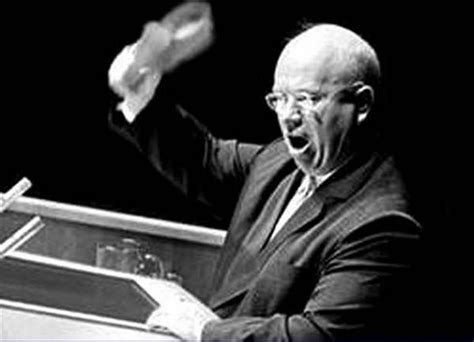
Lug 10, 2022 | The Blog
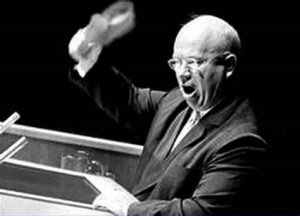 Correva l’anno 1960 e la “Guerra Fredda” era in corso da più di un decennio. Nel corso di una plenaria delle Nazioni Unite a New York, scoppia una violenta polemica tra il rappresentante delle Filippine e il leader sovietico Nikita Khrushchev. Preso dalla foga, il russo interrompe sbraitando il delegato filippino e, afferrata una scarpa che si era tolto, inizia a sbatterla sul tavolo. Nonostante l’assenza di piattaforme di comunicazione di massa, la scena diventa immediatamente virale.*
Correva l’anno 1960 e la “Guerra Fredda” era in corso da più di un decennio. Nel corso di una plenaria delle Nazioni Unite a New York, scoppia una violenta polemica tra il rappresentante delle Filippine e il leader sovietico Nikita Khrushchev. Preso dalla foga, il russo interrompe sbraitando il delegato filippino e, afferrata una scarpa che si era tolto, inizia a sbatterla sul tavolo. Nonostante l’assenza di piattaforme di comunicazione di massa, la scena diventa immediatamente virale.*
Oggi, l’Unione Sovietica è sparita già da trenta anni ma la Federazione Russa può ancora contare su personaggi fuori delle righe come Putin, Lavrov e Medvedev. Come nel caso di Nikita Khruschev, sotto l’abito scuro si cela un cinghiale.
Solo un paese si cinghiali può invadere una nazione sovrana copiando il Blitzkrieg dei nazisti nel 1941 ma dichiarando allo stesso tempo di volerla “denazificare.”
Solo un paese di cinghiali può cambiare ripetutamente lo scopo dichiarato della sua “operazione militare speciale” davanti all’inaspettata reazione ucraina e pretendere di essere credibile ogni volta che cambia le carte in tavola. La sfrontatezza delle menzogne russe è offensiva, ma gran parte della popolazione se le beve, non avendo facile accesso a fonti alternative di comunicazione.
E ora, davanti alla chiara presa di posizione degli Stati Uniti, che continuano a rifornire l’Ucraina di armi e munizioni, solo un branco di cinghiali può dichiarare pubblicamente di volersi riprendere l’Alaska. Nella foto, un cartellone propagandistico russo che dichiara Aliaska Nasha! (L’Alaska è nostra!)
La miscela esplosiva di arroganza, stupidità (…e vodka) permette ai portavoce e propagandisti russi di non vedere il ridicolo di questa affermazione.
Primo, l’Alaska fu controllata brevemente dalla Russia dal 1799 al 1867, anno in cui fu venduta agli Stati Uniti tramite una cessione ufficiale a fronte del pagamento di 7,2 milioni di dollari. Ma trattandosi di un documento siglato dai russi, questi ultimi lo ritengono evidentemente di trascurabile importanza, come gran parte degli altri accordi che hanno firmato.
Secondo. L’Alaska non è l’Ucraina. Oltre ad essere tre volte più grande dell’Ucraina, l’Alaska non è altrettanto facile da invadere e il Canada (che condivide con l’Alaska un confine di 2.475 km) non è la Bielorussia del pupazzo Lukashenko. La logistica di un’invasione dell’Alaska sarebbe un vero incubo.
Terzo. Si tratta chiaramente di una boutade, subito ripresa però dai cinghiali propagandisti di stato e giornalisti russi (dove la distinzione è puramente semantica.) Questi personaggi non si rendono conto di distruggere la propria esigua credibilità con affermazioni grottesche come questa.
Ma chi ha voglia di insegnare il fair play ai cinghiali?
*Nonostante vi fossero numerose testimonianze dell’accaduto, è sempre mancata una documentazione fotografica. La foto che compare in questo articolo è un “fake” d’epoca (ha ben 62 anni) e fece comunque il giro del mondo.
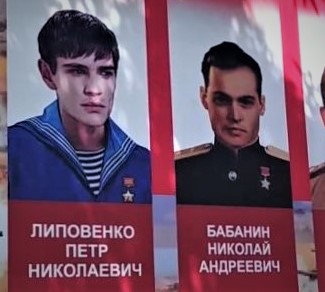
Lug 1, 2022 | The Blog
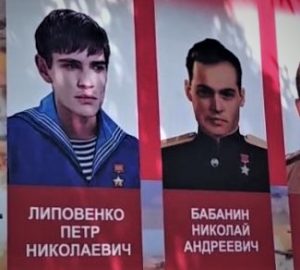 The conflict in Ukraine is being fought not only on the Lysychansk ridge or in the marshy south near Kherson. While the pace of the shooting war has slowed down somewhat, the communication skirmish between Ukraine and Russia is still fiercely on.
The conflict in Ukraine is being fought not only on the Lysychansk ridge or in the marshy south near Kherson. While the pace of the shooting war has slowed down somewhat, the communication skirmish between Ukraine and Russia is still fiercely on.
An all-out effort is underway from both sides to bolster the resolve of their citizens and send a defiant message to the enemy. In this, the victims of Putin’s aggression are head and shoulders ahead.
Ukraine’s ace in the hole is President Zelenskyy himself, who uses the Internet to send a daily update to his people that has proved very effective in reinforcing the country’s fledgling national identity.
One is reminded of the extremely popular “fireside chats” given on the radio by President Franklin D. Roosevelt before and during WW2.
While Volodymyr Zelensky was a successful actor until he became Ukraine’s President in 2019, his Russian counterpart, Putin, is a stodgy communicator who still believes that utter lies told forcefully and with a fixed frown are a winner. Moscow’s Foreign Minister, Sergey Lavrov, uses the same technique, and so does of late Dmitry Medvedev, Putin’s sidekick. Old habits die hard, but I’m sure the above gents are careful to avoid upstaging Putin by sporting a more nuanced style of communication.
The communication war is largely fought on social media platforms. Here again, the daily dose of videos from the Ukrainian Armed Forces is vastly superior to the plodding stuff posted by the Russians, who often resort to stock footage and staged ‘firefights’, not to mention the poor image quality.
Drones as Folk Heroes
The Ukrainians have even managed to make a cult object of the Turkish drones that were the scourge of the ‘Z’ armored forces in the failed march on Kyiv. The TB2 Bayraktars even have a catchy folk tune dedicated to them.
Also, there is a patriotic folk song with much older roots that is often featured in many frontline videos. It’s called Hej, Sokoly. Its origins are debated. Some say it comes from Poland, others swear it’s Ukrainian. The fact remains that it’s very popular in Poland, Ukraine, and even Slovakia, and it’s gotten a new lease on life since the Russian invasion, er, the special military operation.
To shift the social-media appeal 90/10 in favor of Ukraine (having been illegally attacked and invaded is unfortunately not quite enough), another haunting 150-year-old patriotic song massively captures hearts in favor of the defenders. It’s Chervona Kalyna. There are several versions of it, but possibly the most popular one is the recent recording made by Ukrainian pop singer Andriy Khlyvnyuk accompanied by none other than Pink Floyd, and which has racked up over ten million views.
Manufactured Legends
Finally, a few days ago, I came across a goofy attempt by the Russians to spin a stinging defeat into the modern equivalent of the famous Battle of Thermopylae 2,500 years ago. I kid you not.
On the first day of the invasion, several squads of Russian paratroopers landed by helicopter on Hostomel Airport, a facility located just outside Kyiv and owned by Ukrainian aerospace firm Antonov.
The operation was almost immediately in jeopardy when the Ukrainian conscripts defending the airport opened fire on the helicopters with their Igla man-portable missile launchers and downed 6 of them. During the ensuing night, the Ukrainians managed to get reinforcements on site and launched a counterattack that all but wiped out the rest of the 200 Russian troopers. In order to deny the Russians the use of the airport to land supply planes, the Ukrainians then blew up the runways and eventually retreated into the capital city to defend it against the land attack that famously fizzled.
Now the Russians have concocted a legend whereby their brave paras defeated the defenders’ overwhelming numbers and held the airport for a month, while losing a large number of heroes in the process.
There’s a video accompanied by a clumsy ‘chanson de geste’ (lyrics by a certain Sergey Yefimov, a Kremlin-linked spin doctor) that purports to celebrate this totally bogus feat. While some of the footage does show Russian paras running on an airport tarmac, no actual firefights can be seen.
When the Ukrainian troops swooped in by night and started mopping up the remnants of the Russian force, it’s safe to assume the invaders had other more pressing concerns than shooting war videos and mugging for the cameras.
This did not stop the ham-handed makers of this video from concocting a full-size legend, which centers on three Russian soldiers hailed as heroes of the motherland and is eagerly endorsed on video and newsprint by Aleksander Kotz, a shameless scribe writing for the Komsomolskaya Pravda tabloid, which regularly peddles Kremlin-sourced tall stories.
It actually reminds one of the historic fabrication known as Panfilov’s Twenty-Eight, which dates back to the early defense of Moscow in November 1941. In order to boost the morale of both the Russian population and the embattled troops, the red Army invented a full-size battle in which these 28 soldiers were said to have stopped the German advance. The general in command of the unit went by the name of Ivan Panfilov but he did not participate in this action.
Probably because it never happened.
Panfilov’s Twenty Eight
The bogus narrative celebrates the fierce resistance put up by these soldiers who repelled a German infantry attack supported by 54 Panzers. The heroic twenty-eight men all died, but not before destroying 18 enemy tanks and inflicting a whopping 800 casualties on the Germans. Hyperbole much?
In 1942, a war correspondent from the Army’s official rag Red Star (Krasnaya Zvezda) picked up this story, which was nothing but rear-echelon hearsay. Still, the Soviet propaganda machine quickly turned it into a stirring legend and even supported it with a detailed list of the fallen.
Years later, a Red Army investigation exposed a number of gaping holes in the narrative (no German record of such a clash was ever found, some of the “fallen heroes” had died on other dates and in different places. Six were actually alive—thank you very much—and one had actually defected to the other side.)
In 2015, the final word on this mess came from the Director of the Russian Archives, who called the story “a myth.”
But it was a myth instantly championed by Stalin (and later by Brezhnev) and several monuments had already popped up around the USSR to commemorate a glorious feat of arms that never took place.
The present-day Legend of the Hostomel Paras is in good company.
Captain Jack Sparrow was Russian?
Another example of shameless Russian buffoonery is a recent celebration of two Heroes of the USSR spotted in Lugansk. A patriotic poster erected by the local pro-Russian administration shows several heroes of the Great Patriotic War (which is what Russians call WWII).
Unable to find actual portraits that looked heroic enough, the authorities had the airbrushed effigies of US stars Ashton Kutcher and Johnny Depp photoshopped on period uniforms. The surviving relatives of Petr Lipovenko (Kutscher) and Nikolay Babanin (Depp) were not amused.
You can’t make this stuff up—but the Russians and their stooges can.
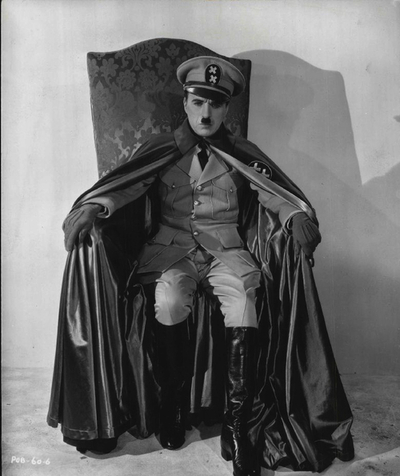
Giu 15, 2022 | The Blog
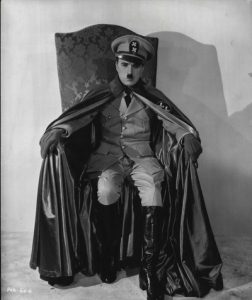 Vladimir Putin deserves to join the ranks of those strongmen whose strategic miscalculations ended up producing unmitigated disasters—firstly for their troops and ultimately for them, too.
Vladimir Putin deserves to join the ranks of those strongmen whose strategic miscalculations ended up producing unmitigated disasters—firstly for their troops and ultimately for them, too.
As a corollary to this statement, tactical and strategic decisions must remain the purview of military leaders. When tyrants overreach their abilities and arrogate to themselves the decision-making on the field, pretty soon things start to go bad.
But don’t take my word for it, read a history book and you’ll come across a number of grave miscalculations incurred by dictators playing generals.
Italian dictator Benito Mussolini attacked Greece in 1940 as “payback” for Hitler’s invasion of Romania, a move on which he hadn’t been consulted. The Duce was convinced the Greeks would not put up a big fight and the Bulgarian Army would simultaneously attack from the East. Mussolini turned out to be wrong on both counts. The Italian army was ill-prepared for this poorly planned campaign and things started to unravel from the get-go.
Iraqi dictator Saddam Hussein believed the world would allow him to invade Kuwait and get away with it. When he sought to justify his unprovoked invasion, he claimed that (a) he had acted to assist “Kuwaiti revolutionaries”, and (b) Kuwait was rightfully Iraq’s 19th province. When the international coalition kicked off the Gulf War in 1991, Saddam and his generals kept announcing “the mother of all battles”, which for them turned out to be the mother of all defeats.
Saddam Hussein’s outlandish claims must have inspired Vladimir Putin in his invasion of Ukraine last February. His shell game of recognizing the bogus People’s Republics of Luhansk and Donetsk (which Russia itself had created and no other country recognized) is truly Saddam-esque.
And equally outlandish is Putin’s claim that Ukraine “belongs to Russia.”
Sadly, also his belief that Ukraine would crumble in a handful of days has been proved entirely wrong.
The sad part is that it will take further sacrifices in blood and treasure before Russia’s strongman is defeated and Ukraine is free of its invaders.
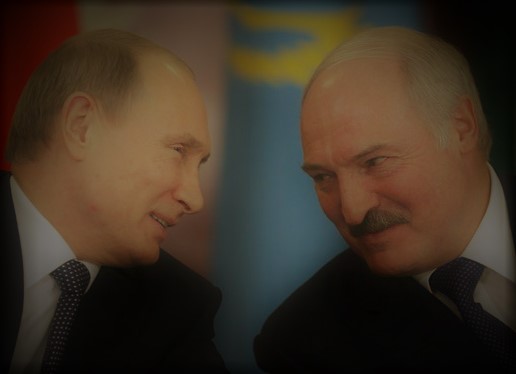
Mag 13, 2022 | The Blog
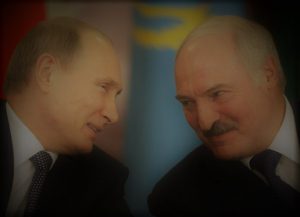 Let’s face it, the war in Ukraine is nothing short of tragic. Yet, as is the case in most human-made catastrophes, there’s an element of ridicule that is worth mentioning.
Let’s face it, the war in Ukraine is nothing short of tragic. Yet, as is the case in most human-made catastrophes, there’s an element of ridicule that is worth mentioning.
It’s the role of Belarus, a country of 10 million people with a GDP that’s slightly higher than that of neighboring Ukraine and nearby Moldova. Or such it was until Putin’s war.
In the extended prelude to the invasion of Ukraine, Belarus’s dictator, Alexander Lukashenko, chose sides and predictably supported Russia, his main trading partner.
Lukashenko thought he’d “do a Mussolini” and earn his country a seat at the winners’ table. He, as well as his partner in crime, thought the war would be a cakewalk and Ukraine would crumble faster than France did in 1940.
Most of his countrymen were not supportive of his decision, but Lukashenko has been a tyrant in Minsk since 1994 and couldn’t care less. Indeed, it is believed that many Belarusians joined the Ukrainian army against Russia and a well-organized Belarusian resistance movement disrupted the rail transportation effort that was supposed to ferry Moscow’s troops and matériel into Ukraine.
That was back in February 2022. In early May, with Moscow’s troops stuck in a war of attrition, the hulking autocrat went as far as to admit in an interview with AP that the war had ‘dragged on’.
Lukashenko’s understatement betrays his nervousness. His country was doing not so bad before his move, but it now stands to suffer the consequences of a Russian defeat on top of the sanctions he’s already incurred for being Putin’s useful idiot.
Like Mussolini, the Belarusian dictator thought he could ride his cohort’s coattails to victory, but he bet on the wrong horse. His recent “military exercises” on the Ukrainian border are just a face-saving ruse, as there’s no way he’ll make a run for Kiev. Putin’s much-touted military juggernaut got beaten hollow by the Ukrainians and Belarus wouldn’t stand a chance against them.
So here’s another example of a tin-pot dictator dragging his country to ruin thinking he could bluff his way to victory while holding poor cards. By the time the war ends, Russia will be poorer in resources and will have to pay war damages. Not much of a well-off trading partner any more.
Both Putin and Lukashenko will have made a disastrous miscalculation (besides conspiring to invade a sovereign country) that may well mark the end of their autocratic regimes.
It would be funny, if it were not for the Belarusian people who never had a say in the matter.
On the other side of the border, most Russians still seem to support this criminal “military operation” and will reap the whirlwind before too long.

 She wrote for the Novaya Gazeta as an investigative journalist who did not pull any punches in criticizing Putin. Politkovskaya was killed in 2006 by a hit-team of five men. The killers got a prison sentence but the person who orchestrated the hit was never found—at least in the 5,798 days that elapsed since Politkovskaya’s death.
She wrote for the Novaya Gazeta as an investigative journalist who did not pull any punches in criticizing Putin. Politkovskaya was killed in 2006 by a hit-team of five men. The killers got a prison sentence but the person who orchestrated the hit was never found—at least in the 5,798 days that elapsed since Politkovskaya’s death.









